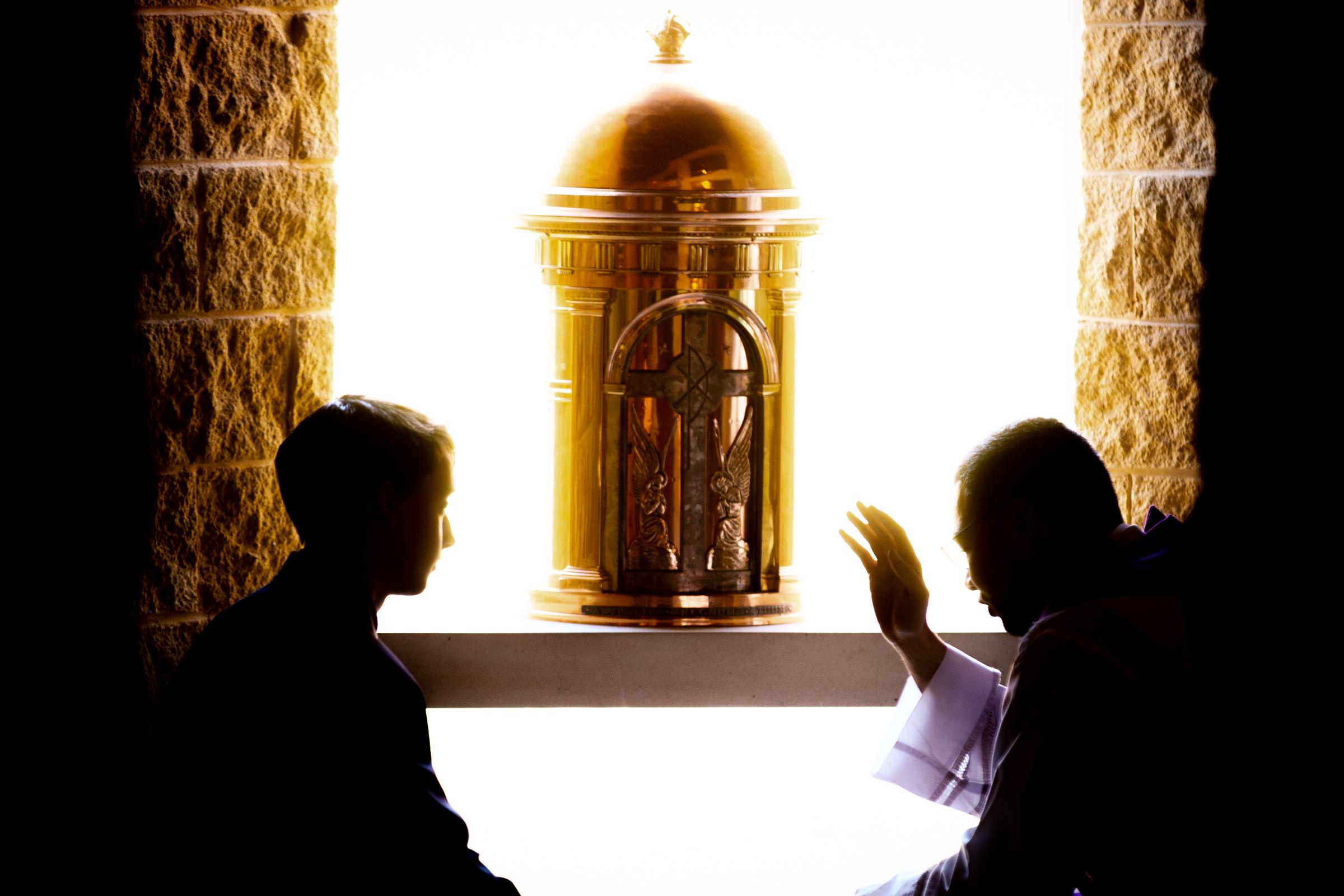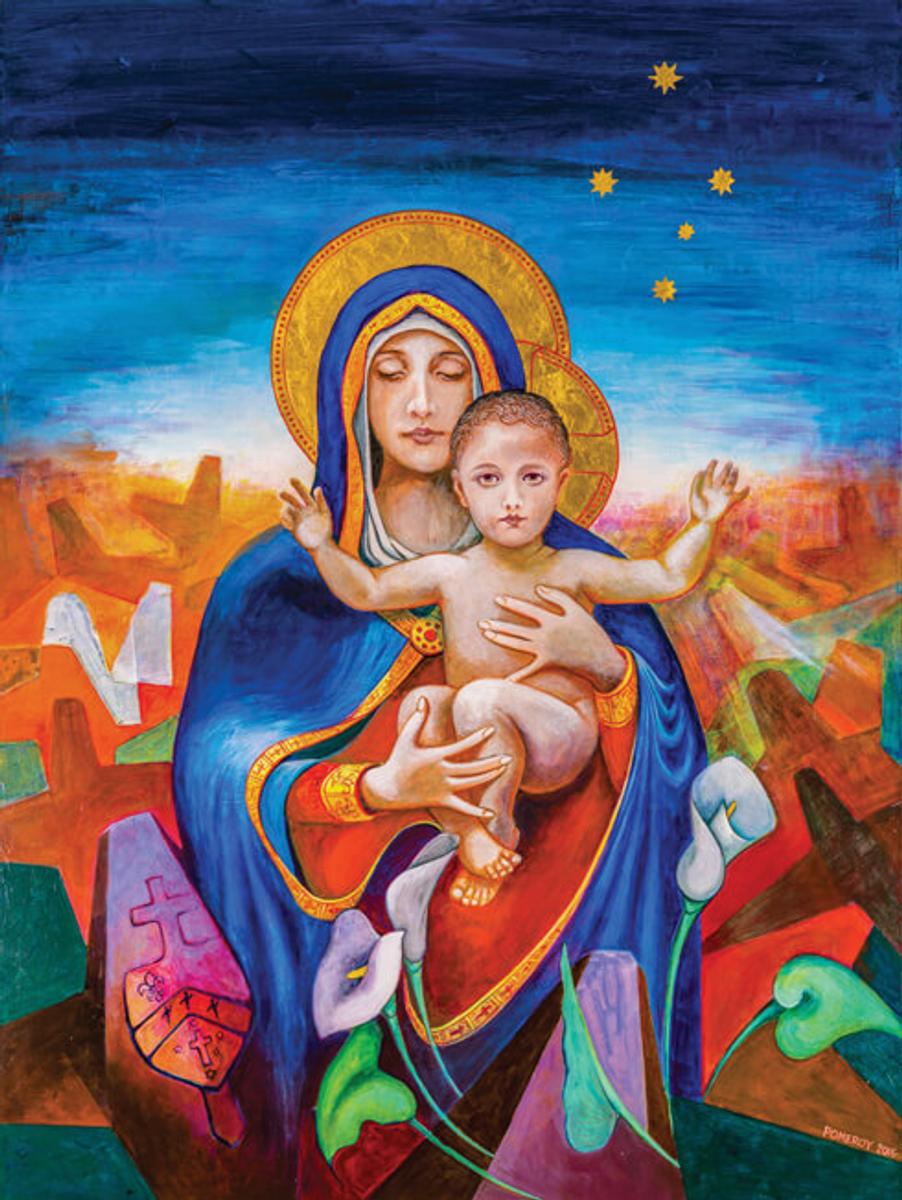Liturgy

Community Mass
Monday, 15 August – special Community Mass for the Feast of the Assumption of Mary, at 8:00am in the Chapel.
The liturgy will be prepared by students in Year 11. All are welcome to attend this Mass and to have a coffee afterwards in the Circle of Friends Café. The Feast of the Assumption is one of two ‘holy days of obligation’ in Australia. Fr Andy Hamilton has kindly provided an interesting piece about the history of this feast – see below.
Community Mass dates/times during weeks 5-7 of Term 3.
| ||
Week 5 15 August (Mass on MONDAY)
| Community Mass at 8:00 am Chapel
Mass on Monday instead of Friday this week.
| Feast of the Assumption (Community Mass)
|
Week 6 26 August
| Community Mass at 8:00 am Chapel
Usual Mass time.
| Prepared by students in Year 10 |
Week 7 2 September | Primary/Secondary Mass at 7:30 am St Louis Sports Centre
Earlier start to allow fathers to attend.
| Dedicated to fathers |
- College Chapel
- Fridays in term time
- Starts: 8:00am and concludes 8:30am
SACRAMENT PROGRAM
‘Family-focused, parish-based, Catholic school supported’
Parents of students in Years 3, 4 and 6
To make arrangements for your child to celebrate the sacraments this year, contact the Parish Priest or Sacrament Coordinator in your own home parish at the earliest.
Enrolment details for parishes of City Beach, Doubleview, Subiaco and Cottesloe/Mosman Park, may be found here.
Cottesloe/Mosman Park Parish advises that the Sacrament of Confirmation will be celebrated Sunday 6 November.
Doubleview Parish advises that First Holy Communion will be celebrated on Saturday 17 September and Reconciliation will be celebrated in the last week of October. .
If you would like further information contact:
- If your nearest parish is not listed, search the Archdiocesan website;
- Contact Mary-Anne Lumley mary-anne.lumley@cewa.edu.au 08 9383 0513.
The Feast of the Assumption of Mary
Reflection on this feast by Fr Andrew Hamilton SJ
The Catholic belief that Mary was taken into heaven has a long history. Though not mentioned in the Scriptures it appears in other early Christian writings. It became widespread in the fifth century when a fierce debate about how to account for Christ’s divinity and humanity arose. The description of Mary as the mother of God affirmed both his divinity and the earthy reality of his human life. It also deepened devotion to Mary as mother, as one who was without sin, as someone to whom we could pray, and as example of the Christian life.
In this world, belief that Mary was taken into heaven, either before or after her death, was natural. Like Son, like mother. In the Western Church Mary was believed to have been taken to heaven before her death. In the Eastern Church she was believed to have died and then to have been taken to heaven. The belief was expressed in devotions, in liturgical celebration, in art and in theological exploration. It was part of Catholic life.
Although not questioned by Catholics, faith in the assumption of Mary became defined only in 1950 as belonging to Catholic faith. This was the highwater mark of Catholic devotion to Mary in the life of the Church. In a Church where women were its core in nurturing faith and in pastoral activities, while the visible aspects of the Church was represented by men, the austerity of Catholic life and devotion was softened by praying to Mary as mother. Women, whose role in society was largely confined to the home, could identify with Mary’s experience of childbirth and raising Jesus, with Mary as the mother whose child had left home, with her pride and anxieties as she followed his life, with her final cruel waiting with him at his public execution, and with Mary in hope of sharing in Jesus’ glory.
Although Mary was often represented in popular art as unshakeable in her faith and as totally self-possessed, as a model of conduct and self-control, and so a reliable companion in prayer, she could also be prayed to as sister who shared our hardships. In the austere masculinity of church ministry, too, Mary represented the ideal woman and mother…
[The meaning of the Feast of the Assumption] has been caught in a later feast instituted by Pope Francis for a more inclusive Church, Mary Mother of the Church. It focuses on Mary’s links to us as well as to God, and also points to the links that unite all Christians and all Churches. The Feast of the Assumption enlivens our hope that we shall be with Christ as Mary now is. It promises that after the struggles and losses of this life that we shall find happiness and companionship with God.
© Andrew Hamilton
Father Andrew Hamilton is a Jesuit, a theologian, a writer and, among his many other roles, the Media Officer for Jesuit Social Services.



